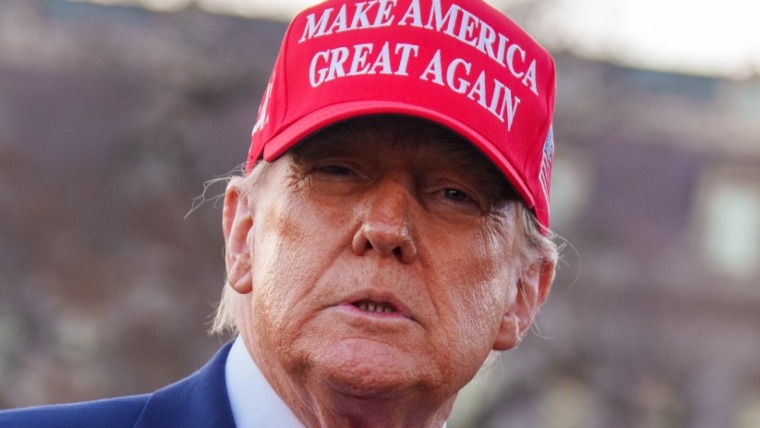Today is what President Donald Trump calls “Liberation Day,” the day he frees the U.S. economy from the global economy. President Trump claims that his policy of chaotically implemented tariffs will “bring back jobs” and that U.S. manufacturing will boom “like we have never boomed before.”
We’ve been down this road before, and it didn’t end well.
In his first term, President Trump claimed that he’d revitalize U.S. manufacturing, but he failed to do so; there’s no reason to believe that doubling down on the same, failed policies will do so now. There is a better way — and that comes with real federal investments into the American economy.
We’ve been down this road before, and it didn’t end well.
President Trump is right to say that domestic manufacturing matters. Some goods are integral to national and economic security, so we all have an interest in ensuring reliable production within our borders or friendshored.
Take the example of semiconductors, many thinner than a wisp of hair, now in everything from cars to refrigerators to cellphones. While innovators in Silicon Valley invented this technology, by the time Trump left office in 2021, most chips were made overseas. When Covid hit, the combination of lockdowns that shuttered factories around the world and higher demand for consumer goods as people were stuck at home led to a global chip shortage affecting 169 separate industries, which, in turn, contributed to rising prices.
This is a clear example of why we must think deeply about what is produced within the boundaries of the nation. So how do we do that?
Tariffs are one tool, but on their own they don’t deliver. After Trump put tariffs in place during his first term and gave tax cuts for the very wealthy, investment in the construction of new manufacturing facilities fell. That’s right, fell.

Now what’s scary is that we’re already seeing signs of manufacturers struggling. In New York state, manufacturers are seeing new orders and shipments fall and overall business conditions deteriorate, leading them to lose hope that this economy will allow them to grow.
When I was working in the Biden administration, we saw a more-than-doubling of investment in the construction of new manufacturing facilities. How did we do that? We invested in America.
While tariffs make foreign goods more expensive, our approach instead sought to improve domestic production. By investing public dollars in infrastructure and other essential services, we brought capital into critical sectors. And we made sure that those investments could thrive and that they would deliver good, middle-class jobs.
This economic development strategy acknowledges the real-world challenge with building up a manufacturing industry in the United States. Firms need infrastructure, such as roads and access to affordable electricity, an ecosystem of other manufacturers, including suppliers, as well as competitors to keep them on their toes and build a community of best practices, and a pipeline of skilled workers who, in turn, need homes and schools and child care for their families.
All of this is a distraction from the fleecing of America by giving $4.6 trillion in tax cuts to the wealthiest.
This is why Congress passed, and President Biden signed into law, the Bipartisan Infrastructure Law, the CHIPS and Science Act, and the Inflation Reduction Act. Combined, these laws catalyzed a trillion dollars in new private investment in clean energy, semiconductors and other advanced manufacturing. By crowding in investment into sectors that matter through both supply and demand side policies and addressing market failures, we saw a revitalization of U.S. manufacturing in sectors in which there’s both need and a potential to thrive.
But President Trump doesn’t get it. He thinks that capricious on-again/off-again tariffs will lead to investment and growth. But no one can plan sound investments amid this chaos. Further, he has no plan to improve domestic industry. The lack of even the concept of a plan is showing up in the data: already, there are indications that manufacturers have scaled back their intentions by $57 billion.
And let’s be clear, all of this is a distraction from the fleecing of America by giving $4.6 trillion in tax cuts to the wealthiest and letting Elon Musk take a chainsaw to the U.S. government. These policies will not spur growth that benefits America’s working people. Just look at what happened last time: in his first term, Trump promised that his tax cuts would lead to growth of 4%-6% and wage gains of $4,000 per worker. Neither happened.
When I visited Syracuse last year, I got to see the Biden administration’s ideas in action. At Beldon Industries, they were installing a new production line to produce a fiber optic cable that is easier to install and more cost-effective, particularly in rural areas. Across town, the Idaho-based semiconductor firm Micron was promising to invest $100 billion over the next two decades, having won a $6.1 billion grant from the CHIPs for America program.
That’s what it means to revitalize American manufacturing. It’s not about one man’s whims, but about helping communities come together and build great things.
